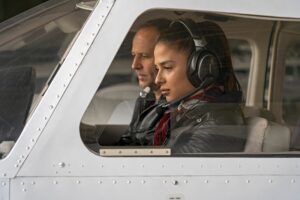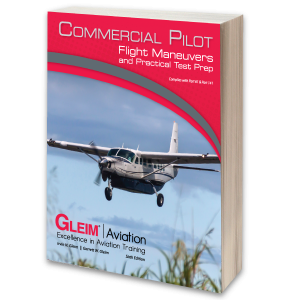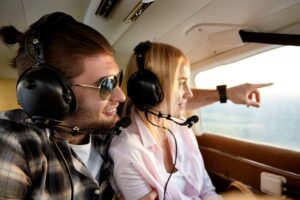 The FAA published Advisory Circular 61-142, on February 25, 2020, with guidance for pilots who may share flight expenses with passengers consistent with the Federal Aviation Regulations. The new AC 61-142 expands on the previously issued AC 120-12A, Private Carriage vs. Common Carriage, to clarify some ambiguities and provide modern applications.
The FAA published Advisory Circular 61-142, on February 25, 2020, with guidance for pilots who may share flight expenses with passengers consistent with the Federal Aviation Regulations. The new AC 61-142 expands on the previously issued AC 120-12A, Private Carriage vs. Common Carriage, to clarify some ambiguities and provide modern applications.
Private Carriage vs. Common Carriage
Common carriage is threefold and is conducted when a pilot or operator “holds out” a willingness to:
- Transport persons or property,
- From place to place,
- For compensation or hire.
Commercial Pilot/ATP
A person who holds a Commercial Pilot certificate or ATP certificate may act as PIC of an aircraft operated for compensation or hire and carry passengers or property for compensation or hire. However, in most cases, the operator is required to hold a certificate under Part 119, and operations “must be conducted under the regulatory provisions of Part 121 or 135.”
This is because most commercial operations for compensation or hire are common carriage operations because they require the operator to hold out to the public. (Exclusions to the list of operations are detailed in 14 CFR 199.1(e) and include ferry flights, crop dusting, banner towing, student instruction, etc.) As such, commercial and ATP certificate holders are exercising private pilot privileges when not conducting operations under Part 121 or 135.
In general, 14 CFR 61.113 states that a private pilot may not act as pilot in command of an aircraft carrying passengers or property for compensation or hire. However, a private pilot may share the expenses with passengers as long as the pilot pays at least his or her pro rata share, and the expenses involve only fuel, oil, airport expenditures, or rental fees.
Common Purpose
AC 61-142 further states that the FAA has consistently interpreted 14 CFR 61.113 to mean that a private pilot must “have a common purpose with his or her passengers.” This is known as the “common purpose test” and prevents pilots from carrying out air-taxi operations without a Part 119 operating certificate.
A simple test for common purpose is to ask yourself, “Who is picking the destination? The pilot or the passenger?” For a common purpose to exist, the pilot must have his or her own reasons for flying to the destination. If a pilot has plans to fly to a destination and his or her friend(s) decide to hitch a ride, then the common purpose test is passed.
AC 61-142 provides many examples of common purpose. The following example shows how the common purpose test applies to a multiple-flight situation:
 “Seven members of a running club, one of whom is a pilot, are participating in a race and they rent a four-seat aircraft to travel to the event. The pilot has to make two flights each way to transport all seven members. The pilot shares a common purpose with the passengers only in the first flight. This is because following the first flight the pilot would be at his destination and able to participate in the race. The second trip fails the common purpose test because the pilot has already achieved his purpose for the flight, i.e., getting to the race location to participate. Any additional trips would be solely for the reason of transportation of the additional members of the running club, and no common purpose would exist. Therefore, the pilot would only be able to share expenses with the first group of passengers.”
“Seven members of a running club, one of whom is a pilot, are participating in a race and they rent a four-seat aircraft to travel to the event. The pilot has to make two flights each way to transport all seven members. The pilot shares a common purpose with the passengers only in the first flight. This is because following the first flight the pilot would be at his destination and able to participate in the race. The second trip fails the common purpose test because the pilot has already achieved his purpose for the flight, i.e., getting to the race location to participate. Any additional trips would be solely for the reason of transportation of the additional members of the running club, and no common purpose would exist. Therefore, the pilot would only be able to share expenses with the first group of passengers.”
Holding Out
Most pilots find the FAA definition of “holding out” rather vague. In general, pilots may solicit others to share expenses as long as they meet the criteria of a limited and defined group. AC 61-142 provides modern examples of when the FAA considers an operator to be holding out. These scenarios include, but are not limited to, using:
- Agents or salespeople. Agents sell tickets to the general public.
- Print publications. The FAA deems advertising in a newspaper or magazine holding out, but a poster at an FBO may be acceptable according to AC 61-142.
- Internet. The Internet has an unlimited audience and would not meet the criteria of a limited and defined group.
- Websites. Just like the Internet, the information is available to virtually everyone.
- Social media. Closed groups on Facebook meet the requirement of a limited and defined group. But posts that are visible to the public are deemed holding out.
- Email. Contacting a select group of people through email is permitted; however, an email broadcast to every contact you have may be deemed holding out.
As an example, let’s say that you occasionally use your airplane to travel for work between Savannah and Atlanta, GA. If you ask a coworker who normally drives this route whether they want to fly with you and share the expenses to save time, then you’re in the clear. However, if you advertise your open seat, then you cross the line into what the FAA considers “holding out.”
 In summary, although pilots may share operating expenses such as fuel, oil, airport expenditures, or rental fees with passengers on a pro rata basis, these exceptions are further limited. To conduct a flight under the exception in § 61.113(c), the pilot must demonstrate a common purpose with passengers and avoid “holding out,” or offering services to the public. Advertising to passengers for a common-purpose flight are restricted to a defined and limited audience, otherwise the pilot will be considered a common carrier.
In summary, although pilots may share operating expenses such as fuel, oil, airport expenditures, or rental fees with passengers on a pro rata basis, these exceptions are further limited. To conduct a flight under the exception in § 61.113(c), the pilot must demonstrate a common purpose with passengers and avoid “holding out,” or offering services to the public. Advertising to passengers for a common-purpose flight are restricted to a defined and limited audience, otherwise the pilot will be considered a common carrier.
Remember, just because you hold a commercial pilot certificate, does not mean you may start charging people to fly them for hire. Unless you’ve been hired by an organization to fly its aircraft as a corporate pilot, your personal flights are likely conducted under the same privileges as a private pilot. Even if you are hired as a corporate pilot, make sure you understand what is and is not permitted. For more information, see the FAA’s guidance on Safe Air Charter Operations.
Are you interested in getting paid to fly as a commercial pilot to fly for compensation or hire? This includes flying people and cargo, or in a variety of other capacities. Many commercial pilots pursue careers as flight instructors, charter pilots, and/or with corporate flight departments. If this is your goal, Gleim can help! Find more information on commercial pilot training here.
Written by Ryan Jeff, Gleim Aviation Research Assistant


